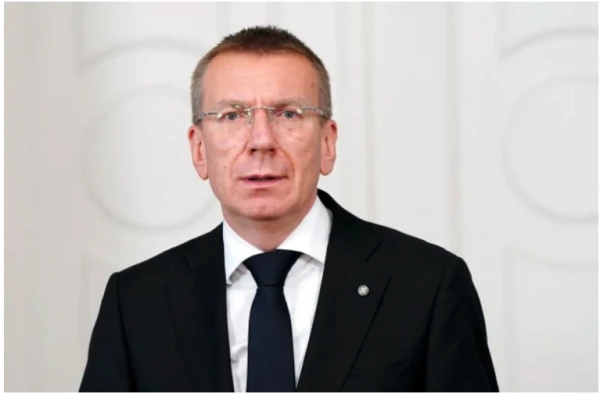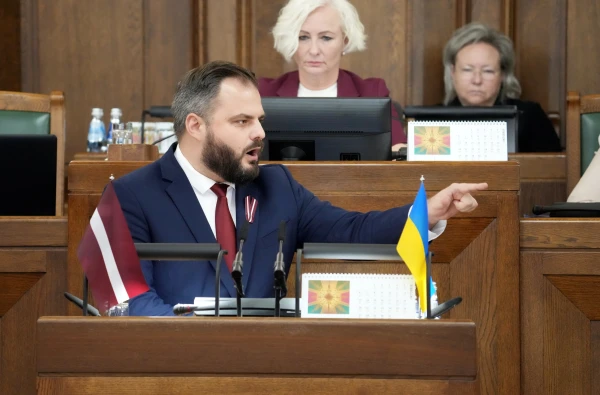
For the last 35 years, our country first transitioned to a market economy, then integrated into the European Union, and now… has returned to a planned economy. In which the role of ministries and agencies is extremely significant!
"The competitiveness of the state would be improved"
Budget-2026 remains the most significant socio-economic challenge for the local political class. Against this backdrop, the Ministry of Finance insists that it has been working correctly overall: "Latvia has been constantly moving towards more efficient and modern governance of public policy, thus already highlighting one of the important aspects of modern public administration theory – increasing the efficiency of public governance."
The department led by Arvils Aseradens, evidently satisfied with how the main financial document of the country for the upcoming year has been drafted, has turned to strategic planning. In the document presented to the government by the minister from "New Unity," it is recommended to "possibly implement state policy more efficiently and economically, as well as optimize budget expenditures and assess their compliance with the priorities and goals set by development planning documents."
It is expected that a new budget structure will be introduced starting in 2027, and with the implementation of the action directions outlined in this information report, by 2028 the budget system will already be fully organized – with information on achievements, new fiscal conditions, planning periods of the European Union, and the National Development Plan.
Three directions – fiscal, economic, and monetary
The innovation proposed by the Ministry of Finance: three different policies will be implemented in the economy.
"The goals of each policy are directed according to their content and meaning.
-
Thus, the primary task of fiscal policy is to balance the size and structure of state revenues, expenditures, and public debt, stabilize the economic cycle, and ensure overall economic balance.
-
The tasks of economic policy are mainly aimed at creating higher added value and increasing the value of resources, which includes stimulating investments, developing production, implementing innovations, improving the business environment, labor market policy, export stimulation policy, and other activities that may be related to the need for financial resources.
-
In turn, the task of monetary policy is to regulate the money supply and other measures aimed at promoting favorable macroeconomic conditions for the long-term development of the economy."
The pinnacle of all planning in the country is the so-called "long-term strategic goals," i.e. "Latvia 2030." The Ministry of Finance emphasizes that all indicators must be reportable and trackable. "By interacting at all these levels, decision-making, resource allocation, and the provision of public management services are improved," the department is confident.
Corporate tools – for public governance
In fact, this is about introducing modern business practices of large enterprises into domestic bureaucracy – practices that are considered modern in the West. Here’s what is planned to be achieved:
-
Improving organizational productivity – the ability to effectively solve problems;
-
Accountability and transparency, better prioritization, fostering trust in the government, aligning societal expectations with available resources;
-
Adaptation, the ability to evolve, balancing changing service delivery requirements.
More freedom of action
The state is recommended to reduce the detail of budget programs that currently exist. "For example, in the budget law for 2025, at the time of its approval, there were only 430 programs (subprograms), including 267 for core functions and 158 for foreign financial assistance."
Instead, sectoral ministries "will have to ensure a system of management and financial control that coordinates the allocation of funding at the institutional level and ensures compliance with the overall appropriation approved by the state budget law and the achievement of set goals."
Management of lower-level financial resources, starting from 2027, will no longer be brought to the legislative level – as currently every redistribution (appropriation) is first approved by the Cabinet of Ministers, then by the Saeima Budget and Finance (Tax) Commission, and then voted on at a plenary session of parliament… In the near future, this will become a narrow departmental issue! And to say – among legislators, there are all sorts of people, who knows if they even understand the common good.
And so, the State Treasury will decide everything: "to increase efficiency, digital transformation, and optimization of public funds in the long term."
How far is it to Tallinn
Judging by the Ministry of Finance document, the European Union as such is no longer a guideline for us; Latvia is proposed to move towards the best budget practices of the Organization for Economic Cooperation and Development. Among the countries that implement a "results-oriented approach to budget management," the largest is the United Kingdom, but for us, a more proportionate (and also EU member) Estonia has been found. There, "the preparation of the state budget and policy planning flow from one another and are balanced processes."
What has Tallinn achieved? "In the state budget strategy, the principles of budget policy, government priorities, and the allocation of funds across sectors are indicated, along with an analysis of the economic situation, macroeconomic forecasts, forecasts of central government expenditures, and other significant information for financial management."
In Estonia, the ClickView principle is fully implemented – i.e. viewing with one click, or the availability of all information (of course, non-secret).
"Having become more advanced in the IT field, the Estonians have created an interactive tool for society – the "Tree of Truth," which provides an overview of the most important state indicators in a visually accessible form for society. It presents indicators comparing actual results in various areas with the goals of three development plans: Estonia's Sustainable Development Strategy – "Sustainable Estonia 21"; "Estonia 2035"; Action Plan."
But, as always, the devil is in the details, i.e. in the mentality. Trying to do as in Estonia is certainly possible. But – where will Latvia find so many Estonians? Perhaps they will be imported…
















Leave a comment